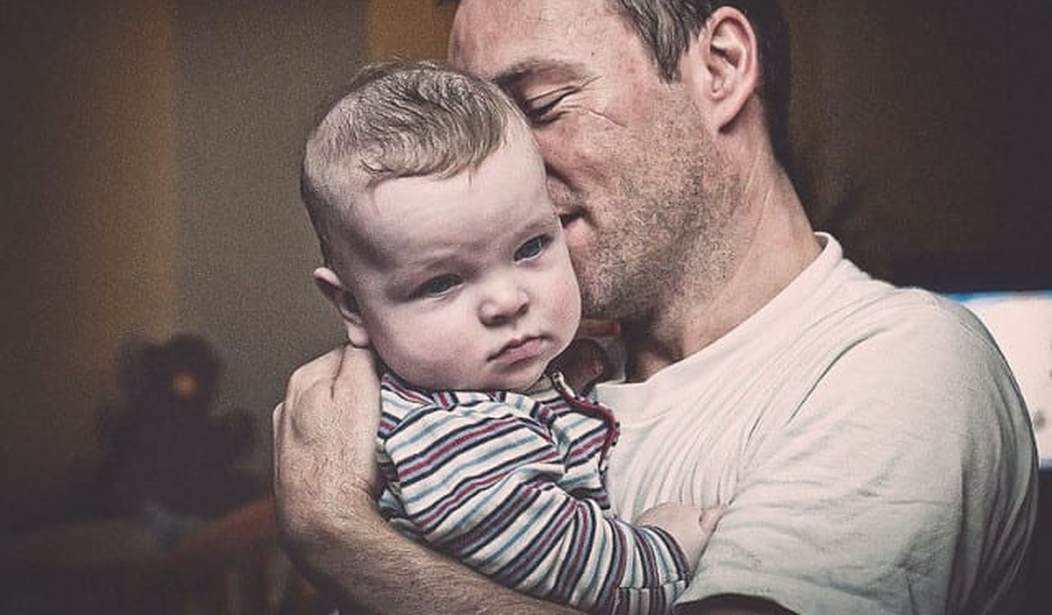Men in America are waiting longer to start families. The average age of fathers in America increased by 3.5 years between 1972 and 2015, according to a new study in the journal Human Reproduction. Despite variations along geographic, racial, and demographic lines, the average age of American fathers increased from 27.4 to 30.9 over that time. In addition, the number of children fathered by men over 40 doubled in that time.
Despite this trend, the gap between the ages of mothers and fathers has been decreasing over the same period.
Researchers at Stanford University conducted a deep data analysis of live births in the United States to answer the question: “How has the mean paternal age in the USA changed over the past 4 decades?” They studied 168,867,480 live births from 1972 to 2015 and discovered some clear trends.
The study fills a gap of knowledge about trends in fatherhood. Much research has been dedicated to studying trends in motherhood, but this is the first time a similar study has been conducted to track paternal age. As the paper’s abstract states,
The study found that Asians have the highest average paternal age, while African-American and Native-American fathers had the lowest average age. Geographically, fathers in the Northeast had the highest average age, while the South had the lowest. College education was also associated with higher average paternal age. Despite these variations, the authors say, “Paternal age is rising within the USA among all regions, races and education levels.”
Researchers also found that the number of fathers over age 40 increased from 4.1 percent to 8.9 percent over that time, and fathers over 50 increased from 0.5 percent to 0.9 percent.
These demographic changes could have significant implications for population dynamics in America, as well as on the economy. Michael Eisenberg, MD, is the senior author of the study. He is an assistant professor of urology at Stanford University Medical Center. Eisenberg says that there are pluses and minuses to older fathers. Older fathers have an upper limit to how many children they can have in their lifetime, which would affect national population replacement rates. Also, Eisenberg says, “every potential dad acquires an average of two new mutations in his sperm each year. And there are associations between older fatherhood and higher rates of autism, schizophrenia, chromosomal abnormalities, some pediatric cancers and certain rare genetic conditions.”
Other studies, it should be pointed out, suggest that genetic mutations are less of a cause of mental health disorders in children of older fathers; rather, fathers with hereditary mental health issues tend to delay fatherhood until later in life. So it may not be clear that mental health outcomes in children are directly affected by the age of the father.
Things aren’t all bad. Eisenberg notes that older parents are more likely to have stable lifestyles, careers that are better established, and more savings and accumulated resources. Plus, they’re more likely to live with their children, providing a more stable environment for child rearing.
As noted earlier, the rise in the average age of fathers has not led to a rise in the average age difference between fathers and mothers. It’s actually gone the other direction because average maternal ages are rising even more rapidly. Eisenberg says that this is largely due to women spending more time in higher education than in the past and spending more time pursuing careers. The ready availability of contraception is also a key factor. The result is that the average age difference between fathers and mothers dropped from 2.7 years to 2.3 years between 1972 and 2015.
Eisenberg warns that this could have a stepwise effect on our economy. He says, “Fewer people being born means fewer productive workers a generation down the road. This can obviously have profound tax and economic implications.”
Another interesting point was revealed in the statistical analysis. The study used data reported by the National Vital Statistics System run by the Centers for Disease Control. The data is dependent upon reporting by the mother at the time of birth. The NVSS records births and deaths collected by all 50 states, as well as self-reported maternal information. The information from the mother includes information about the father, such as age, income level, education level, etc. Voluntary reporting of maternal information is much higher than for paternal information, for a variety of reasons. The interesting point about reporting is that there is evidence that children whose paternal information shows up in their birth records demonstrate better overall health outcomes.
Incidentally, the youngest dad in the database from 1972-2015 was eleven years old. The oldest was eighty-eight. According to Eisenberg, the world record holder is an Indian man who fathered a child at 94, and again at 96, with his wife who was in her late 50s.
This study shows similar results to other parts of the industrialized world. As the New York Times reports:
The trend is not exclusive to the United States. In Germany, for example, the median age of fathers rose during the 1990s to 33.1 from 31.1. In England, fathers over 35 accounted for 40 percent of all births in 2003, compared with 25 percent in 1993.
It is clear that our population is changing, and that American parents are waiting longer than previous generations to have children. It remains to be seen how that will affect societal outcomes.










Join the conversation as a VIP Member